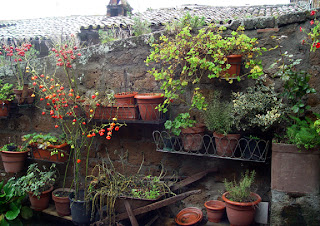 The current popularity of residential brick ovens appears to be based on their entertainment value. A good enough reason.
The current popularity of residential brick ovens appears to be based on their entertainment value. A good enough reason.

 A group of guests (except for a couple of guys, beers in hand) won't gather around a grill. Your guests certainly won't stand in front of your kitchen range, fascinated by the view through the heat-proof window of the oven.
A group of guests (except for a couple of guys, beers in hand) won't gather around a grill. Your guests certainly won't stand in front of your kitchen range, fascinated by the view through the heat-proof window of the oven.All the wood-fired brick ovens, I've built or seen attract watchers. Many of them provoke participation.
 The added bonus of wood-fired brick ovens comes from their versatility as cooking devices. Avid cooks dream of brick ovens.
The added bonus of wood-fired brick ovens comes from their versatility as cooking devices. Avid cooks dream of brick ovens.The final bonus is the connection to a way of cooking that is millennia-old.
 Residential wood-fired brick ovens, especially indoor installations, require some care to insure safe operation. Fortunately, modern refractory materials: insulation, insulated chimney components, and various fire-proof design elements, make common-sense conformation to local codes easier.
Residential wood-fired brick ovens, especially indoor installations, require some care to insure safe operation. Fortunately, modern refractory materials: insulation, insulated chimney components, and various fire-proof design elements, make common-sense conformation to local codes easier.















































